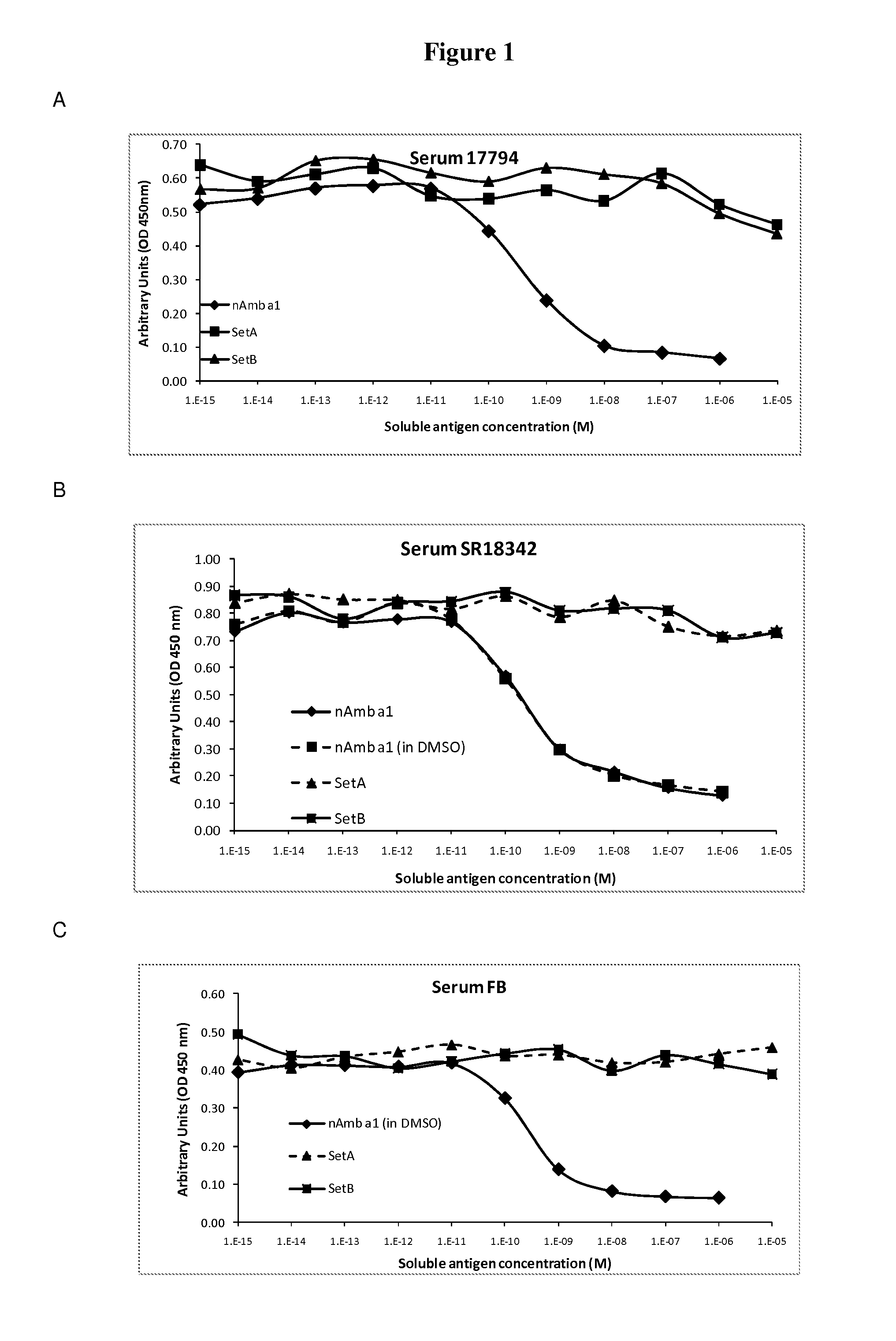Contiguous overlapping peptides for treatment of ragweed pollen allergy
a ragweed pollen and overlapping technology, applied in the field of contiguous overlapping peptides, can solve the problems of therefore elicit allergic reactions in humans, and reducing so as to reduce and preferably eliminate the ability to bind ige and improve the solubility properties
- Summary
- Abstract
- Description
- Claims
- Application Information
AI Technical Summary
Benefits of technology
Problems solved by technology
Method used
Image
Examples
Embodiment Construction
[0037]The invention is described below by way of examples with reference to the following experimental procedures and results.
[0038]In order to select for products with lowered IgE binding, two sets of long (30-90 amino acids) contiguous overlapping peptides (COP) were devised encompassing the entire Amb a 1 allergen, thus providing all possible T cell epitopes. A first set (A) encompassed six peptides AllerR1, -R2, R3, -R4, -R5 and -R6, with reduced ability to form secondary structures as derived from analysis based on potential IgE epitopes and the tertiary structure of Amb a 1. A second set (Set B) of five COPs, AllerR7, -R8, -R9, -R10 and -R11, was selected. AllerR8 was readily soluble in water, AllerR10 was soluble in aqueous buffer at pH7 but AllerR7, 8, 9 and 11 were only soluble in DMSO but not in water. Due to these unforeseen solubility issues, SetA would be preferred for further development.
[0039]In Set A, the only peptide difficult to solubilize in water was AllerR4 (SEQ...
PUM
| Property | Measurement | Unit |
|---|---|---|
| reactivity | aaaaa | aaaaa |
| solubility properties | aaaaa | aaaaa |
| concentrations | aaaaa | aaaaa |
Abstract
Description
Claims
Application Information
 Login to View More
Login to View More - R&D
- Intellectual Property
- Life Sciences
- Materials
- Tech Scout
- Unparalleled Data Quality
- Higher Quality Content
- 60% Fewer Hallucinations
Browse by: Latest US Patents, China's latest patents, Technical Efficacy Thesaurus, Application Domain, Technology Topic, Popular Technical Reports.
© 2025 PatSnap. All rights reserved.Legal|Privacy policy|Modern Slavery Act Transparency Statement|Sitemap|About US| Contact US: help@patsnap.com



